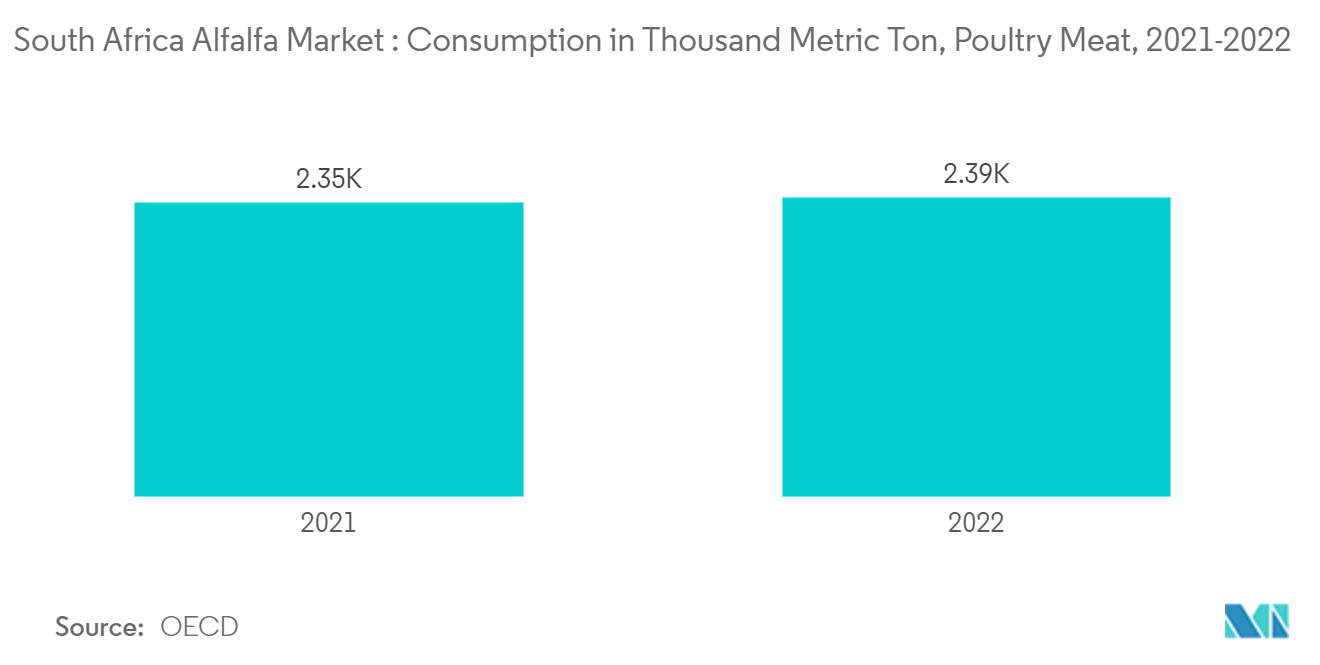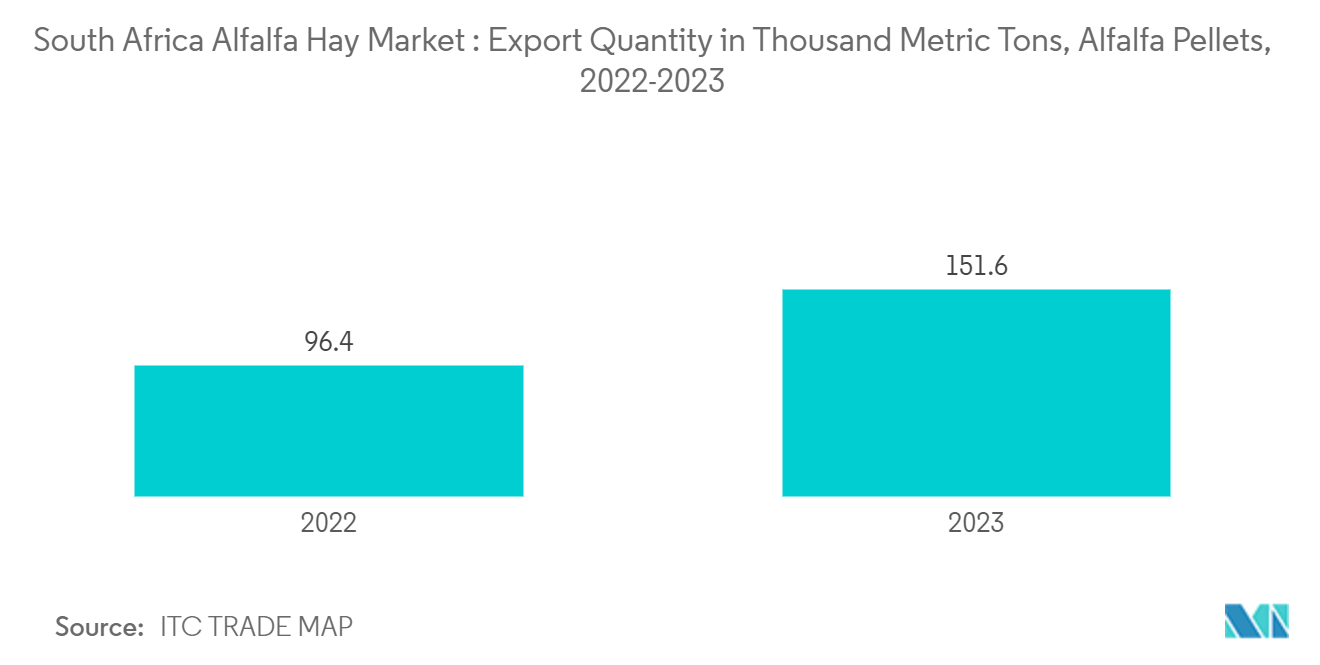Market Trends of South Africa Alfalfa Hay Industry
Increasing Meat Consumption is Boosting the Alfalfa Hay Market
- Meat consumption is a major factor responsible for the growth of the South African alfalfa market. The quality of meat products primarily drives the meat market in the country. Meat is the desired source of protein in major parts of the country. According to a journal named Appetite, published in 2023, meat consumption is often seen as a symbol of prosperity and success in urban areas. People associate it with affluence and social status. As a result, there is a strong preference for meat-based dishes. Furthermore, the Organisation for Economic Co-operation and Development (OECD) reported that South Africa consumed 2,392 thousand metric tons more poultry meat in 2022 than it did the year before, or a rise compared to the previous year. Therefore, the rising demand for high-quality meat puts pressure on South African farmers to produce alfalfa hay.
- Alfalfa is considered one of the finest products in the international market owing to a good grading system developed by the National Lucerne Trust (NLT). The high demand for quality dairy and meat products is increasing the demand for quality feed, which, in turn, is driving the market for alfalfa, as farmers are choosing good-quality forage for cattle to produce high-quality animal products. Additionally, the increasing demand for meat and meat-based products, including processed burgers and sausages, is anticipated to impact the food service industry significantly. This influence is expected to be particularly pronounced in the quick-service restaurant segment.

Increased Global Demand for South African Alfalfa
- South Africa's alfalfa is known globally because of its quality and grading. According to the ITC Trade Map data, South Africa exported 151.6 thousand metric tons of alfalfa pellets globally in 2023. Also, the South African lucerne is graded number 1, as certified by the National Lucerne Trust (NLT) under the National Lucerne Trust's new lucerne hay quality index (NLQI) used to grade the quality of the lucerne depending on the amount of protein and fiber.
- The major importers of South African alfalfa pellets are Saudi Arabia, the United Arab Emirates, Saudi Arabia, China, and Botswana. South Africa exports a majority of 64.7% of its alfalfa pellets to the United Arab Emirates. The demand for alfalfa hay is increasing significantly in the United Arab Emirates due to changing production practices in the UAE dairy industry.
- Modern dairy farmers in the United Arab Emirates and worldwide are raising an increasing number of dairy cows, and they prefer using South African alfalfa in cattle feed. According to the UAEStat, the total population of livestock is on the rise from 100,914 in 2019 to 112,370 in 2021. Thus, the rising global demand for quality and protein-rich alfalfa hay from the country is expected to benefit the South African market shortly.


